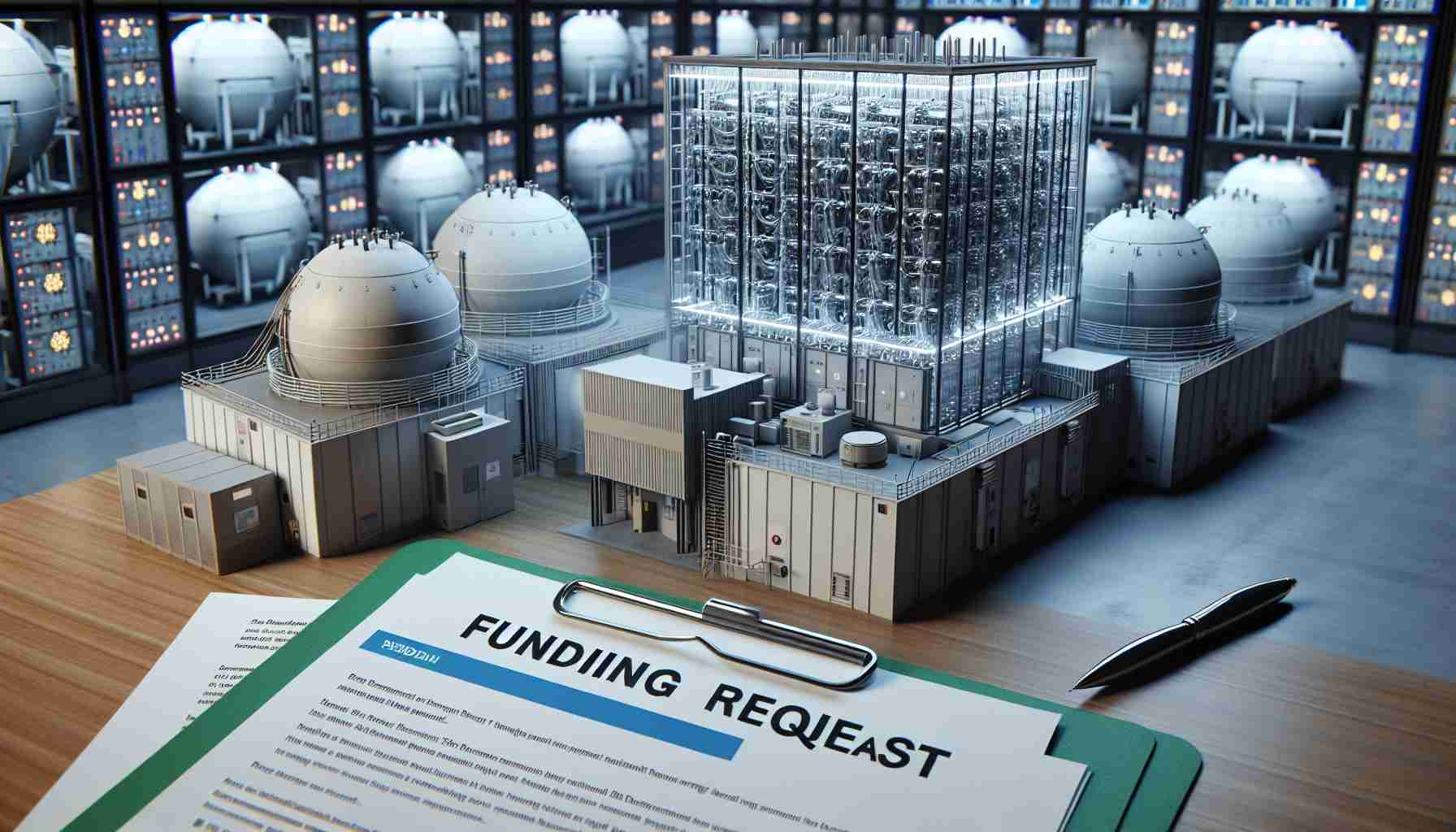Fusion power, often heralded as the ‘holy grail’ of energy, is stepping out of science fiction and inching closer to reality. With advancements in technology and unprecedented investments, we could be on the brink of a revolution in how we harness power.
The Fusion Frontier: Unlike conventional nuclear energy that relies on fission, fusion power seeks to replicate the sun’s energy production by fusing atomic nuclei. The benefits are staggering: it promises virtually limitless power, zero greenhouse emissions, and the elimination of long-lived radioactive waste. For decades, the challenges of achieving controlled fusion have kept this technology in the realm of expensive experiments and theoretical debates.
Recent Breakthroughs: In recent years, however, there have been glimmers of hope. Private companies and governments alike are pouring billions into research, with breakthroughs emerging in magnetic confinement techniques and laser-driven inertial fusion. Particularly noteworthy is the advancement in superconducting magnet technology, which is crucial for containing the incredibly hot plasma required for fusion reactions.
A New Energy Paradigm: In the context of escalating concerns over climate change and energy scarcity, fusion power offers a compelling solution. Imagine an era where clean energy is not only sustainable but abundant enough to power the growing demands of our modern world.
Fusion power might still be in its experimental phase, but with each passing year, it edges closer to becoming a cornerstone of our future energy strategy. The next decade could witness fusion shifting from dream to transformative reality, fundamentally altering how we power our planet.
The Dawn of Fusion Power: A Sustainable Future Beckons
Fusion power, often heralded as the ‘holy grail’ of energy, is making a significant leap from the realm of science fiction into a potential reality. As we stand at the threshold of an energy revolution, advancements in fusion technology, backed by unprecedented investments, promise to reshape our approach to harnessing power.
Impact on the Environment and Humanity:
Fusion power’s potential to provide virtually limitless energy with zero greenhouse gas emissions presents a pivotal opportunity to combat climate change. Unlike fossil fuels, fusion reactions use deuterium and tritium, isotopes of hydrogen, which are abundant in water. This means a dramatically reduced carbon footprint and the promise of clean, sustainable energy for generations to come. The elimination of long-lived nuclear waste further enhances its environmental appeal, as it mitigates the long-standing issues faced by current nuclear fission reactors.
The shift to fusion energy could have profound implications for humanity. As energy demands surge alongside global population growth, fusion offers a solution to meet these needs without exhausting natural resources or exacerbating global warming. This transition would not only aid in stabilizing energy prices but also democratize power access across the globe, reducing energy poverty and fostering economic equality.
Economic Implications:
The rise of fusion energy could spark a new industrial revolution. Massive investments in fusion research signal the beginning of this transformation, promising substantial economic returns. As technology matures, job creation in new sectors will emerge, including high-tech manufacturing, engineering, and environmental management.
Private and governmental funding is galvanizing fusion advancements, notably in magnetic confinement techniques and superconducting magnet technology. These breakthroughs are essential for achieving controlled fusion reactions at commercially viable scales. As the world pivots toward fusion energy, economic structures could shift, with fossil fuel-dependent economies compelled to adapt or diversify their energy portfolios.
A Glimpse into Humanity’s Future:
The potential realization of fusion power could fundamentally alter the trajectory of human progress. With sustainable, abundant energy, long-dreamt innovations such as water desalination, advanced manufacturing, and space exploration become feasible on a larger scale. Fusion energy could power settlements on other celestial bodies, making interplanetary travel and colonization realistic goals.
In the context of a warming planet and finite resources, fusion’s development holds the key to a future where energy is both limitless and clean. As we inch closer to this reality, humanity has the opportunity to redefine its relationship with the environment, ensuring that technological progress does not come at the expense of ecological health.
The next decade promises to be an exciting and transformative era, with fusion power potentially leading the charge toward a sustainable, equitable, and prosperous future for all.
Unlocking the Secrets of Fusion Power: The Next Energy Revolution
Understanding the Potential and Challenges of Fusion Energy
Fusion power has long been hailed as a transformative force in the energy sector, promising a future of endless power and zero emissions. As the technology inches closer to practical application, its potential impact is becoming clearer, along with a host of challenges, innovations, and market dynamics that surround it.
Inside Fusion Technology: Innovations and Insights
One of the most exhilarating advancements in fusion technology is the development of high-temperature superconductors. These materials significantly enhance the efficiency of magnetic confinement methods, making it possible to sustain the plasma state necessary for fusion reactions longer and more efficiently. ITER, the world’s largest fusion experiment, is pioneering this field by integrating these superconductors into its magnetic system, which could dramatically reduce operational costs and energy input.
Sustainability and Environmental Impact
Fusion’s promise of zero greenhouse gas emissions and the elimination of long-lived radioactive waste is a game changer in today’s environmentally-conscious society. Unlike its fission counterpart, fusion minimizes long-term waste issues, making it a more sustainable solution. Even though the technology is still under development, if successful, fusion could reduce reliance on traditional fossil fuels, cutting down carbon emissions on a massive scale.
Market Potential and Economic Predictions
The fusion energy market is forecasted to grow exponentially over the next few decades. While initial investments are high, the long-term economic benefits could be substantial. Industry analysts predict that once operational, fusion will drastically lower energy production costs. As a result, fusion technology is attracting both private and government investments, aiming to commercialize operations within the next 20 to 30 years.
Security and Autonomy Considerations
Another critical aspect of fusion technology is its potential to enhance energy security and autonomy. With the ability to generate power locally without the need for imported fuels, countries can gain independence from fluctuating global energy markets. This makes fusion a strategic asset for national energy infrastructures.
Challenges and Limitations
Despite its vast potential, the path to commercializing fusion energy is fraught with challenges. The engineering feats required to sustain high-temperature plasma and the construction of robust containment structures are significant hurdles. Critics also highlight the high initial costs and long development timelines, which could deter even the most optimistic investors.
Global Efforts and Collaborative Work
Fusion power development is a global effort, with international collaborations like ITER leading the charge. Multinational teams working across different geographical locations help to share the burden of research and development costs. These collaborations are critical in addressing and overcoming the technological barriers that remain.
The Future of Fusion: A Work in Progress
While we remain on the threshold of a fusion-powered world, the ongoing innovations and improvements suggest a promising future. Over the next decade, further breakthroughs could bring fusion energy from experimental viability to a commercial reality. As more resources are allocated to solve its engineering challenges, fusion could truly become the cornerstone of a sustainable energy future.
The source of the article is from the blog regiozottegem.be



